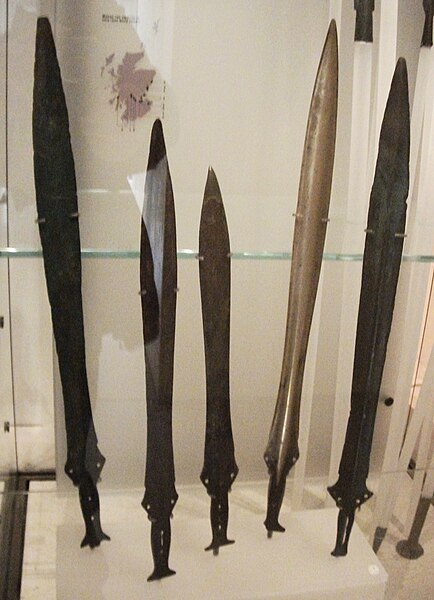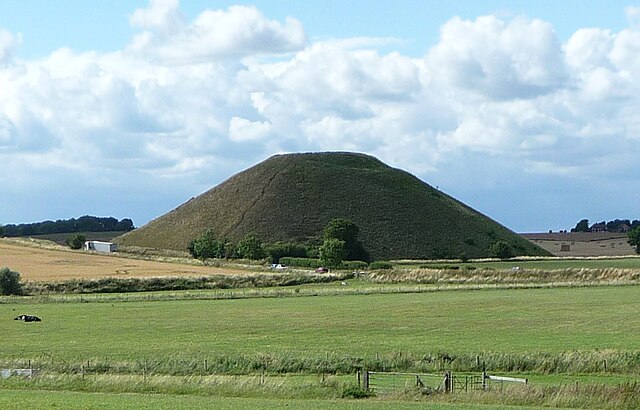The Hove amber cup is a Bronze Age cup that was discovered in a great round barrow mound that was crudely excavated in 1856, in Hove, East Sussex, England, and is now in Hove Museum and Art Gallery. It was found during the construction of Palmeira Square. The barrow was of exceptional size and quality, suggesting a date in the mid-Bronze Age. The Hove amber cup is one of only two found in Britain; the other was in Dorset. However, the two are not of the same style of craftsmanship.
Photo of the cup by Royal Pavilion & Museums, Brighton & Hove
Hove amber cup on display in the British Museum Stonehenge exhibition
Bronze Age Britain is an era of British history that spanned from c. 2500–2000 BC until c. 800 BC. Lasting for approximately 1,700 years, it was preceded by the era of Neolithic Britain and was in turn followed by the period of Iron Age Britain. Being categorised as the Bronze Age, it was marked by the use of copper and then bronze by the prehistoric Britons, who used such metals to fashion tools. Great Britain in the Bronze Age also saw the widespread adoption of agriculture.
Bronze swords found in Scotland
Stonehenge ruins
Silbury Hill, c. 2400 BC
Bush Barrow gold lozenge, c. 1900 BC.






